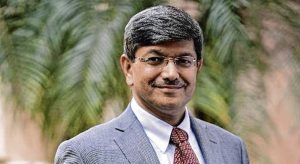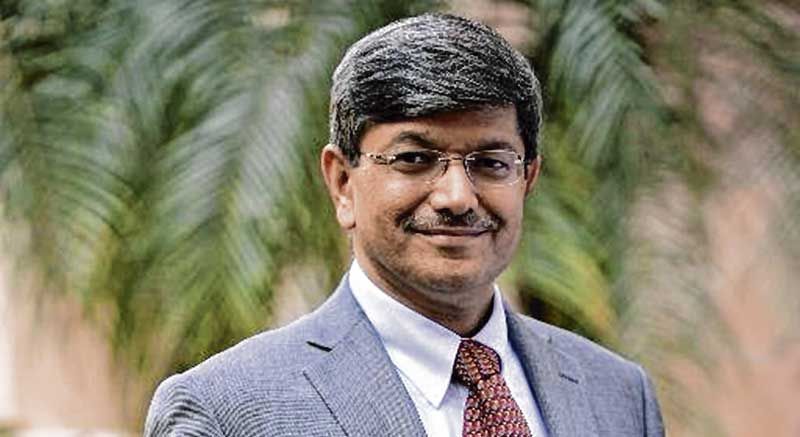http://www.freepressjournal.in/business/ntpc-anchors-strongly-in-turbulence-gurdeep-singh-cmd-ntpc/1113961
NTPC gears up for turbulence — Interview with Gurdeep Singh, cmd NTPC
— By RN Bhaskar and Pankaj Joshi — | Aug 02, 2017 01:01 am
 The power business worldwide is in a flux and India too has felt this impact at some level. With falling equipment prices and power project tariffs, the traditional calculations have somewhat become irrelevant. NTPC, the largest power generation company is in the eye of this storm and has had its policies scrutinised by sector observers. Gurdeep Singh, CMD of the company discusses the sector storms and the company’s plans with R N Bhaskar and Pankaj Joshi.
The power business worldwide is in a flux and India too has felt this impact at some level. With falling equipment prices and power project tariffs, the traditional calculations have somewhat become irrelevant. NTPC, the largest power generation company is in the eye of this storm and has had its policies scrutinised by sector observers. Gurdeep Singh, CMD of the company discusses the sector storms and the company’s plans with R N Bhaskar and Pankaj Joshi.
Today sector is looking at a huge disruption worldwide. What is your take on this?
Undoubtedly, renewable power or carbon-free energy is a good development. NTPC is also striving to have a role in this. Our objective, in line with national priorities, is that each citizen should have power as much as required and at affordable cost. For that, all types of energy will be needed. Plus for free flow of power, the grid is needed. As a business, we have to generate electricity at the affordable locations and then take it where it is needed. In this, we definitely see more addition in the renewable capacity going ahead. At sectoral level, a policy reconsideration is inevitable and it has already been on for some time.
In a time of falling tariffs for renewable energy projects, how do you assess their viability?Low tariffs should not bother anyone. An environment of transparent practices and low tariffs should make all very happy. The equipment prices are falling for a while now which is getting reflected in tariffs. Let us remember that in renewable energy two factors are vital— namely capital cost and cost of capital. Both are currently in a soft phase.
Our primary task in a project is to take care of quality of construction, quality of equipment installed and ensure uptime and long-term durability. With the way equipment prices have dropped, today for us a unit price of Rs 3.25 is viable at renewable project level.
For individual bets in the renewable space – bidding at Rs 2.44 —we cannot say anything and there must be some arguments for that figure, but overall we are of the view that Rs 3-3.25 tariff works. If you remember the 2011-12 figure, which was Rs 15, you will be able to gauge the sea change that the renewable segment has seen. Whether this kind of bidding will land renewable energy players in financial trouble, is something that we will have to wait and see.
As a supplier, NTPC again is responsible to make power available. Having a background in thermal power, we have to factor in the 175 GW coming in from renewables and scale up our own capacity as well. Our two-year target is 25 GW wherein we have reached barely 4 GW. Our own investment has been in 875 MW and around 2.75 GW investment has been done by other capacity developers.
What is your take on the possibility of renegotiation of tariffs?
This is a topic where we have had Court judgements. A power purchase agreement (PPA) represents a huge commercial impact in terms of investment, cash flow etc.
We believe in two things – sanctity of legal contract and renegotiation only when both parties are amenable. Here we may mention that regulators are also an involved party. When tariffs would go up, no one calls up to renegotiate. All said, the renegotiation pressure would be on the new PPAs.
Regarding the immediate impact on our sales, we must say that the environment of dropping tariffs did make our client universe of discoms reluctant to sign PPAs. However, with tariffs now stable and having moved up a bit from the Rs 2.44 levels, we are now expecting the process to be somewhat expedited. Globally module prices have stabilised and even moved up a bit.
Our strategy in investment has always been PPA backed. Without a PPA, we do not invest which is why pretty much 100 per cent of our capacity is contracted. While this policy of ours has been proved right till now, we are open to modifications in light of sectoral developments.
Coal availability for us is not the key issue – we have not imported since 2014. The key test is that as a consumer you consume as much as you want and we have enough coal to give our customers that much power at a price acceptable to them.
Do you think the quality concerns on Chinese equipment and the GST angle will impact the sector dynamics?
The sector for a long time has been discussing about Chinese equipment which are large in number and are not long-lasting by design. NTPC has for long had a stringent certification and inspection process with equally stringent specifications. We plan for and achieve 25-year duration of an equipment. As far as the installations of other developers are concerned, we are clear that we pay only when we get delivery of power into the grid. That is our risk mitigation.
We understand that investment in thermal power, which we are indeed doing, is a rarity at global level today. It follows that bids from suppliers are numerous and perhaps aggressive. We understand that suppliers too have seen softening of their input costs and are anxious to get orders, while logically no one wants to work on loss basis. In all this, the company is clear about its goals – timely commissioning and environmental compliance. Any project cost reduction is documented and factored in our tariffs. We have our norms and cannot keep the entire benefit with us.
The phenomenon of GST is somewhat recent and needs to be studied. But a small escalation is more likely in equipment prices due to this and consequently we think the tariffs in the next round of bidding will be impacted by this.

What is your policy on biomass-based renewables within your capacity growth map?
Biomass inputs are a significant area of interest for us and we are working parallel on this, mainly on how to make some units co-fired. Some engineering work on the boilers are required.
Next step is to enable delivery of biomass at the plant in briquette or pellet form. Once this is done, it imparts both ecological and economic value to the biomass. For this, some procurement strategy is required which would encompass aggregation and transport. That is the value chain which is to be created. We have already issued a tender.
The potential for biomass is unarguably high. Any boiler can be configured to accept biomass for 10 per cent capacity. Considering India has 2 lakh MW capacity and biomass can touch only 25 per cent of that and then only 10 per cent capacity can be fired, it means 5,000 MW can be the potential target. For generation of 1,000 MW, you need 4-5 million tonnes biomass which means a viability market of 20-25 million tonnes.
Whenever co-generation is available, cluster model of power generation is the best to utilise biomass. Else our model would work, more so because, once we create an ecosystem for briquettes, other uses will follow.
NTPC FY2017 highlights
Particulars Amount
Gross generation (crore units) 25,000
Plant load factor (per cent) 78.59
Revenue from operations (Rs crore) 78,273
PAT (Rs crore) 9,385
Recommended dividend/ share (Rs) 4.78










































COMMENTS